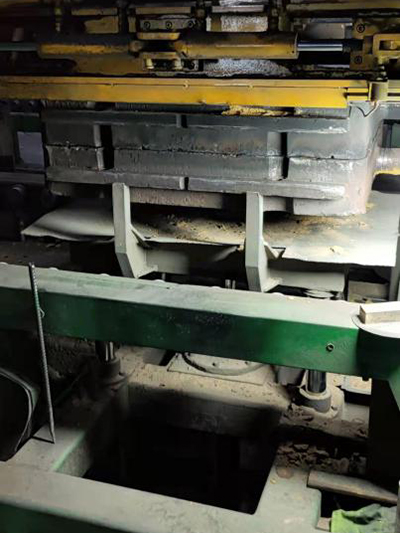Understanding Sand Casting Services A Comprehensive Overview
Sand casting, one of the oldest and most versatile metal casting processes, plays a crucial role in various industries, from automotive to aerospace. This article delves into the intricacies of sand casting services, exploring their benefits, processes, applications, and the future of this time-honored technique.
What is Sand Casting?
Sand casting, also known as sand molded casting, is a metal casting process characterized by the use of sand as a mold material. The process involves creating a sand mold, pouring molten metal into it, and allowing it to solidify before removing the casting. This method can be employed for both ferrous and non-ferrous metals, making it highly adaptable to different manufacturing needs.
The Sand Casting Process
1. Pattern Making The first step in sand casting is the creation of a pattern, typically made from wood, plastic, or metal. The pattern is a replica of the final product and is slightly oversized to account for metal shrinkage during cooling.
2. Mold Creation The pattern is placed in a mixture of sand and bonding agents, pressed or packed tightly to create a mold. The mold consists of two halves the cope (top) and the drag (bottom). Once the mold is formed, the pattern is removed, leaving a cavity that mirrors the shape of the desired casting.
3. Pouring Molten metal is poured into the mold cavity through a designated gate. This step requires careful temperature control to ensure the metal flows smoothly and fills all areas of the mold.
4. Cooling After pouring, the molten metal is allowed to cool and solidify. The cooling time can vary depending on the size and thickness of the casting.
5. Mold Removal Once the metal has cooled sufficiently, the mold is broken apart to reveal the casting. The sand can often be reused in future molds, making the process economical and environmentally friendly.
6. Finishing The cast piece may require additional finishing processes such as trimming, grinding, and surface treatment to meet specific tolerances and surface quality standards.
Benefits of Sand Casting
sand casting service

- Cost-Effectiveness Sand casting is generally more economical for small to medium production runs
. The materials used, primarily sand, are readily available and inexpensive.- Flexibility This casting method allows for the production of complex shapes and large components, making it ideal for diverse applications.
- Reusability The sand used in casting can be recycled repeatedly, minimizing waste and reducing material costs.
- Rapid Prototyping Sand casting is suitable for rapid prototyping, enabling manufacturers to quickly test designs before full-scale production.
Applications of Sand Casting
Sand casting finds its application in various industries, including
- Automotive Used for manufacturing engine blocks, cylinder heads, and transmission cases. - Aerospace Producing precision parts that require intricate designs and high-performance specifications. - Construction Fabricating components like structural support systems and machinery parts. - Art and Sculpture Artists utilize sand casting for creating intricate metal sculptures and installations.
The Future of Sand Casting Services
As technology continues to evolve, the sand casting industry is seeing significant advancements. Innovations such as 3D printing are beginning to influence the pattern-making process, allowing for more complex designs and reduced lead times. Additionally, the introduction of automated systems is streamlining the sand casting process, improving efficiency and precision.
Furthermore, the growing emphasis on sustainability within manufacturing is prompting the exploration of eco-friendly sand casting materials, which will help minimize the environmental impact of traditional sand casting processes.
Conclusion
In conclusion, sand casting services represent a time-tested and versatile method of metal casting that continues to adapt to modern requirements. With its cost-effectiveness, flexibility, and reusability, sand casting remains a vital process across numerous industries. As technological innovations shape the future of manufacturing, the sand casting industry is poised to embrace new techniques while preserving its foundational practices, ensuring its relevance for years to come. Whether for prototyping or large-scale production, understanding the nuances of sand casting services is essential for industries looking to produce high-quality metal components efficiently.
Post time:កញ្ញា . 25, 2024 20:21
Next:ceramic sand
